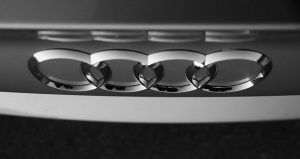Mastering PCP Claims in the UK: Strategies to Dispute Wear and Tear Charges
When returning a vehicle under a Personal Contract Purchase (PCP) in the UK, it's crucial to u…….

When returning a vehicle under a Personal Contract Purchase (PCP) in the UK, it's crucial to understand 'wear and tear' expectations as per BVRLA guidelines. These guidelines dictate what aging and usage is acceptable within PCP deals. To avoid unexpected costs at contract end, familiarize yourself with these standards. Keep records of your vehicle's condition throughout the lease, including photographs and service history, as evidence for any wear and tear disputes. If you face high wear and tear charges upon returning your leased car, review your PCP agreement to understand the allowances and consider seeking an independent assessment or valuation if you believe the charges are unfair. For support with PCP claim disputes, utilize specialized services in the UK, and remember that you have rights under the Financial Conduct Authority (FCA). If needed, escalate unresolved issues through an Alternative Dispute Resolution (ADR) scheme like The Motor Ombudsman or the Financial Ombudsman Service. By understanding PCP claims UK processes and maintaining detailed records, you can navigate any disputes over wear and tear charges effectively and ensure a fair resolution.
Navigating a Personal Contract Purchase (PCP) agreement can be a strategic financial decision for car ownership in the UK. When it comes to understanding and potentially disputing wear and tear charges on PCP contracts, knowledge is key. This article demystifies PCP claims within the UK framework, outlines effective strategies to challenge excessive wear and tear costs, and guides you through the resolution process. Armed with this information, you’ll be better equipped to manage your PCP claim and maintain control over your vehicle finance arrangements.
- Understanding PCP Claims and Wear and Tear Charges in the UK
- Strategies to Dispute Excessive Wear and Tear Charges on PCP Contracts
- Navigating the Resolution Process for PCP Claims and Contesting Charges
Understanding PCP Claims and Wear and Tear Charges in the UK

When navigating Personal Contract Purchase (PCP) agreements in the UK, it’s crucial to have a clear understanding of what ‘wear and tear’ entails within the context of your contract. Wear and tear charges are a contentious aspect of PCP deals, as they cover the expected deterioration of your vehicle over its contract term. Understanding these charges is essential for avoiding unexpected costs at the end of your agreement. Typically, wear and tear is defined by guidelines set out by the British Vehicle Rental and Leasing Association (BVRLA), which stipulate what level of use and condition is deemed acceptable. It’s important to familiarise yourself with these standards before the return of your vehicle to avoid potential disputes. PCP claims in the UK are subject to these guidelines, and any deviation from the agreed-upon condition may result in additional charges. Therefore, it’s advisable to document the vehicle’s condition at the start and end of your contract, keeping records such as photographs and service history reports. This documentation can serve as evidence should you wish to dispute wear and tear charges at the end of your PCP agreement. Engaging with these terms and understanding the implications will help ensure a smooth and fair end-of-contract process when it comes to your PCP claim in the UK.
Strategies to Dispute Excessive Wear and Tear Charges on PCP Contracts

When disputing excessive wear and tear charges on Personal Contract Purchase (PCP) contracts, it’s crucial to approach the situation with a clear understanding of your agreement’s terms and conditions. Begin by meticulously reviewing the contract to identify the guidelines set for wear and tear allowances. These allowances account for typical aging and usage that can be expected over the course of the contract term without incurring additional charges. Document any pre-existing damage or fair wear and tear from the onset of your contract, as this will support your case when disputing final settlement figures.
To effectively challenge potential overcharges, gather evidence such as photographs taken at the start and end of the contract, which clearly show the car’s condition. Additionally, seek out independent assessments or valuations from reputable sources to substantiate your claims. If discrepancies are found between the financing company’s assessment and the impartial reports, use these as leverage in your dispute. Keep a detailed record of all correspondence and evidence submitted throughout the process, as this will be beneficial should the case escalate to a dispute resolution service like the Financial Ombudsman Service or a PCP claims expert. In the UK, there are dedicated services and experts specializing in PCP claims who can guide you through the process of disputing unfair wear and tear charges. Utilizing these resources can significantly increase your chances of a successful outcome.
Navigating the Resolution Process for PCP Claims and Contesting Charges

When faced with wear and tear charges on a Personal Contract Purchase (PCP) agreement, it’s crucial to understand the resolution process. Upon receiving an itemised settlement statement from the finance company, carefully review the charges to determine if they align with the actual usage and condition of the vehicle. If discrepancies are evident, initiate the resolution process by contacting the finance provider directly. This process typically involves providing evidence that contradicts the alleged wear and tear, such as photographs documenting the car’s condition at various points during your tenure, and any relevant service records that can substantiate your claim. It’s advisable to act promptly and follow the finance company’s guidelines for dispute submission.
In the event that you believe the charges are unjustified, you have rights under UK consumer law to contest these charges. The Financial Conduct Authority (FCA) provides a framework for PCP claim disputes, ensuring fair treatment for consumers. To contest wear and tear charges, submit your complaint in writing to the finance company, detailing your position and evidence supporting your case. If the initial resolution with the finance provider doesn’t yield a satisfactory outcome, you can escalate the matter to an alternative dispute resolution (ADR) scheme, such as the Motor Ombudsman or the Financial Ombudsman Service. These bodies can offer impartial adjudication, and their decision is usually binding for the finance company. Throughout this process, it’s essential to maintain a clear record of all communications and keep copies of all relevant documents for reference. Understanding your rights under PCP claims in the UK and actively engaging with the resolution process can help ensure that any disputed wear and tear charges are fairly assessed.
When navigating PCP claims in the UK, understanding the nuances of wear and tear charges is paramount. This article has outlined the critical aspects of PCP claims, equipping consumers with strategies to dispute excessive wear and tear charges effectively. By familiarising oneself with the resolution process for PCP claims and knowing one’s rights, motorists can confidently contest any unjustified expenses. The guidance provided ensures that individuals are better equipped to manage their vehicle financing responsibly, leading to fairer outcomes in the realm of personal contract purchase agreements.







